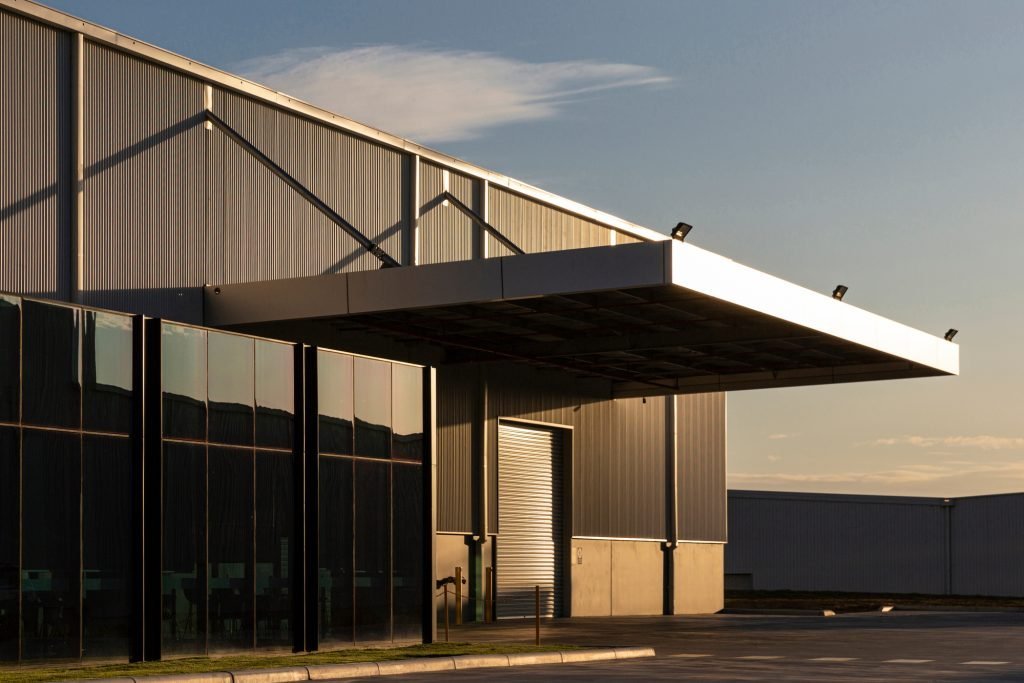When you need additional storage space for equipment, inventory, vehicles or other assets, you have a crucial decision to make: should you opt for a Quonset hut or traditional building?
Quonset huts and conventional storage structures both offer advantages and disadvantages. Understanding the differences can help you determine the best storage solution for your specific needs and budget.
What Are Quonset Huts?
Quonset huts are semi-cylindrical metal buildings first used during World War II for military housing and storage. Today, modern models, such as storage Quonsets at Price Buildings, provide economical, durable, and customizable structures for storage and other commercial and industrial uses.
Their distinguishing features include:
- Arch-shaped, corrugated steel walls and roof
- Wide spans up to 60 feet without interior supports
- Options for concrete floors or raised foundations
- Roll-up doors or standard entrance doors
- Customizable sizing, layouts and accessories
Quonset huts have evolved from their military origins to versatile structures suitable for various applications.
Benefits Of Quonset Huts
Quonset huts offer unique benefits over traditional rectangular buildings:
- Cost-Effective Construction: The prefabricated, modular design enables quick assembly, keeping costs low. The simple structure requires no internal columns or trusses, making the construction process even more straightforward. To ensure the integrity and stability of your project, consider using a truss solver calculator. This tool can help you accurately design and evaluate trusses, further streamlining your construction efforts. If you’d like to know more about Quonset hut construction, check out this link: https://www.youtube.com/watch?v=tyn-KrVxIkU.
- Adaptable Layouts: The absence of interior supports allows customizable floor plans with wide-open interior space. Units can be combined for expansion.
- Durability: Heavy-gauge steel and galvanization or exterior coatings provide corrosion, fire and pest resistance. These structures stand up to harsh weather and frequent use.
- Low Maintenance: Durable materials and straightforward systems require little upkeep other than occasional wear-and-tear repairs.
- Energy Efficiency: Their rounded shape offers less surface area for heat transfer than square buildings. Strategic insulation placement also retains interior temperature effectively.
These advantages enhance the appeal of these semi-cylindrical structures, making them a practical choice for storage and other uses.
Drawbacks Of Quonset Huts
While Quonset huts offer numerous advantages, it’s important to also consider some potential limitations that come with their distinct design. These include:
- Appearance: Some dislike the rounded, ‘tunnel-like’ look though colors and landscaping can soften the visual impact.
- Limited Height: The arched interior restricts vertical storage capacity, with typical heights under 20 feet.
- Moisture Condensation: Temperature swings cause interior humidity and condensation without proper ventilation.
- Acoustics: Their hard, curved surfaces create loud echoing that needs acoustic dampening modifications.
- Snow Accumulation: Snow slides easily off the rounded roofs but requires extra clearance around the building.
Quonset huts are a cost-effective and durable solution for various needs, but these potential limitations should be taken into account when considering their use.
Benefits Of Traditional Storage Buildings

Traditional storage buildings, with their conventional straight-walled structures, also offer a range of advantages:
- Familiar Appearance: Their rectangular shape fits aesthetically with other commercial buildings.
- Vertical Space Use: Walls and flat roofs optimize upright storage capacity. Common heights range from 16 to 24 feet.
- Moisture Control: The flat roof and vertical walls allow better ventilation control to manage humidity.
- Sound Quality: Their flat, angular geometry reduces echoing for clearer acoustics.
- Expandability: It’s simpler to add matching extensions or adjoining buildings.
These storage buildings may not offer the same unique design as Quonset huts, but they provide their own set of benefits. These advantages make them a viable option for various storage and commercial needs.
Drawbacks Of Traditional Storage Buildings
Although standard storage buildings offer several advantages, they also come with certain drawbacks:
- Higher Cost: Materials like lumber and the need for interior framing and supports increase expenses.
- Limited Clear Span Width: Support columns restrict open floor plans. Truss systems can span wider but add cost.
- Frequent Maintenance: Components like roof coverings, seals, and framing require periodic inspection and repairs.
- Less Resilience: Light-gauge metal and standard lumber are more vulnerable to damage.
- Lower Energy Efficiency: The flat surfaces and 90-degree angles transfer more ambient temperature.
The potential drawbacks of conventional storage buildings should be considered when choosing the type of structure that best suits your needs.
Choosing Your Storage Solution
When choosing your storage solution, it’s important to weigh your specific needs, preferences, and constraints. Here are key factors to consider:
- Purpose And Size: Consider the intended usage (e.g., vehicle or inventory storage, workspace) and the necessary square footage and ceiling height.
- Budget And Timeline: Take into account both construction and lifetime maintenance costs, as well as the speed of needed completion and occupancy.
- Location And Climate: Consider factors such as visibility, available space, and local climate conditions (e.g., snow load, wind exposure, temperature swings).
- Design Preferences: Think about your preferred architectural style, exterior finish options, and interior environmental needs (e.g., lighting, ventilation, sound dampening).
- Access And Efficiency Goals: Consider whether you need human-sized doors or large vehicle access, and determine your insulation needs and priorities for energy efficiency.
Both Quonset huts and traditional storage buildings have their own advantages and drawbacks. The choice between the two will depend on your specific requirements and circumstances. It’s important to carefully consider all these factors to make an informed decision that best suits your needs.
Final Thoughts
An expert builder can help assess your storage requirements and recommend the best structure. With mindful planning, you can acquire the ideal storage facility to safely house your valued equipment, inventory and possessions.

